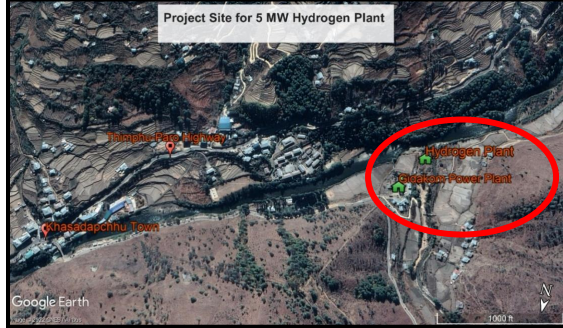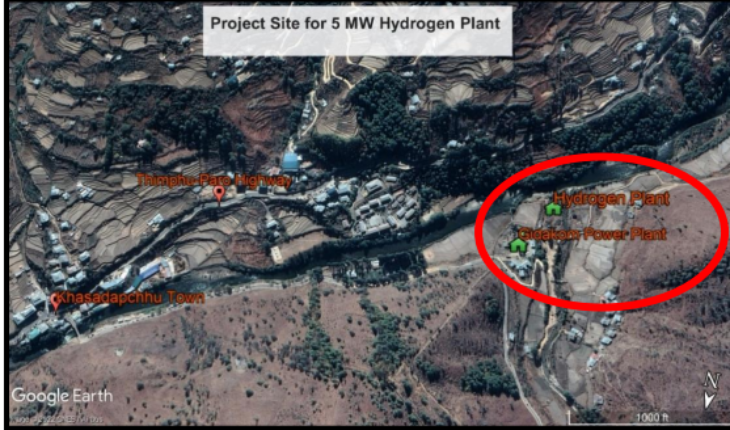
RENUKA RAI
Thimphu
Green hydrogen is a clean and sustainable energy source that has the potential to play a critical role in the transition to a low-carbon future. Unlike most other types of hydrogen, which are produced from fossil fuels, green hydrogen is produced through the electrolysis of water using renewable energy.
Currently, Bhutan’s electricity supply is primarily from hydropower generation and alternative renewable energy sources such as wind and solar are being explored to diversify the supply and enhance energy security.
The Power System Master Plan 2040 estimates that the country has a hydropower potential of 36,900 MW, out of which 32,600 MW are techno-economically viable. Installed capacity of hydropower generation is 2,334 MW in the country including small, mini and micro hydropower plants.
Approximately, another 3,641 MW of installed capacity from hydropower and around 1,000 MWp from solar PV are envisaged to be added to the grid by the year 2030. While majority of hydroelectricity generated is exported to India, the country imports power during the lean season to meet the soaring domestic load in winters just as generation declines from the runof-river hydropower plants in the country.
However, while the country exports clean electricity, there is a concern about the rising import of fossil fuel products in the transport and industry sectors and increasing for power supply.
Bhutan does not have any known oil or petroleum reserves and imports all petroleum products such as petrol, diesel, LPG, and kerosene from India. As per the Annual Trade Statistics 2021, revenue earned through export of hydroelectricity in 2021 was Nu. 24,435.44 million, however, in the same year the import of fossil fuels was Nu 8,348.37 million.
Therefore, key advantages of introducing Green Hydrogen industry in Bhutan, could be availability of green hydrogen to decarbonize the hard-to-abate sectors such as transport and manufacturing industries, whilst ensuring a positive trade balance.
Hydrogen will be an integral part of Bhutan’s energy matrix in the coming years in view of energy security concern. Bhutan Sustainable Hydropower Policy, 2021 lays down the intent to develop a hydrogen economy to address the energy security concerns and impending impacts of climate change.
Therefore, the hydrogen roadmap outlines the targets needed to accelerate the transition to sustainable future. The roadmap lays out the objectives, key targets, and timeline for the implementation of green hydrogen technology.
The goal is to provide a clear target for realizing the full potential of green hydrogen and its impact on the environment and the economy
According to IRENA’s World Energy Transitions Outlook, hydrogen could account for 12% of global energy demand and cutting 10% of CO2 emissions by 2050.
The majority of the economic giants are developing policy initiatives, technology, manufacturing capacities, and export facilities to promote green hydrogen value chains. Transportation, shipping, fertilizer, chemical, steel, cement, refinery among others are the target sectors for Hydrogen interventions.
Given Bhutan’s developing nature external financing sources are likely to be introduced to its monetary base. Multiple development banks and banking groups offer hydrogen related investment opportunities with many of them focusing on emerging economies.
Bhutan has the opportunity to engage with relevant institutions and pursue participation in specific programs, seeking financial partnerships to facilitate its green hydrogen development initiative.
The country also holds export opportunities in the emerging hydrogen market. With its abundant renewable energy resources and potential for green hydrogen production, the country can tap into the growing global demand for clean energy solutions.
The availability of competitive and renewable electricity from hydropower plants provides a competitive advantage in producing cost-effective green hydrogen
The roadmap highlights the role of hydrogen in transportation, industrial processes, and power generation, emphasizing its potential to reduce greenhouse gas emissions and contribute to sustainable development.
The expansion of hydrogen deployments, supported by a robust supply and distribution infrastructure, is expected to drive economic growth and environmental sustainability.




